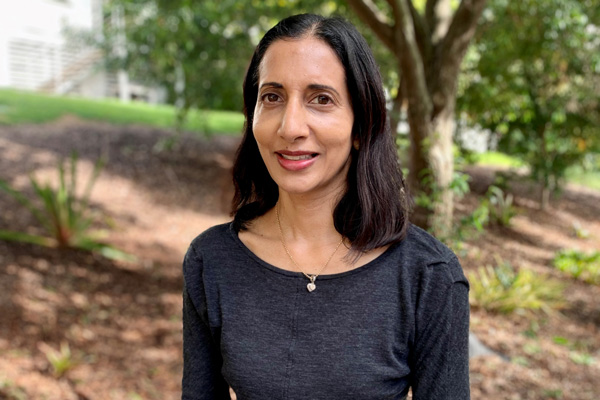Mini-brains set to revolutionise epilepsy treatment

Associate Professor Lata Vadlamudi said ongoing seizures have a huge impact on quality of life for patients.
Researchers at the Royal Brisbane and Women’s Hospital (RBWH) and the University of Queensland (UQ) are trialling a new technology which is set to help epilepsy patients find the best treatment for their condition sooner.
One in 26 Australians will develop epilepsy in their lifetime and more than 30 per cent of these people do not respond to anti-seizure medications. Often, the journey to find a medication or combination of medications that successfully control an individual’s seizures can take many years of trial and error.
Despite more than 15 new anti-seizure medications becoming available in the past 30 years, the situation has not improved. Epilepsy specialists have identified an urgent need to find a new approach so appropriate treatment for patients can be found faster and with more precision.
Stem cell biologists in conjunction with researchers at RBWH and UQ are using cutting edge technologies to grow human stem cells from epilepsy patients into organoids in the lab, otherwise known as ‘mini-brains’. Researchers are then able to test different anti-seizure medications on the organoids to see if these cells mirror how patients react to the medications. If successful, it will revolutionise the way drugs are selected for epilepsy patients.
RBWH Neurology Senior Staff Specialist and University of Queensland Neurosciences Theme Leader Associate Professor Lata Vadlamudi said ongoing seizures have a huge impact on quality of life for patients.
“The prospect of shortening the tumultuous journey many epilepsy patients must undertake to find the right medication is incredibly exciting,” she said.
“For some patients, the process of finding a medication that works can be a rollercoaster, trialling drug after drug in the hope of improving their seizures. There is disappointment and distress each time a drug fails to improve their condition, as well as potential side-effects with each drug trialled.
“This can have an enormous toll on patients’ physical and psychological condition, resulting in a reduced quality of life and increased risk of sudden unexpected death associated with epilepsy.
“We are optimistic our research will result in a major step forward in epilepsy treatment.”
UQ’s Australian Institute for Bioengineering and Nanotechnology Professor Ernst Wolvetang said the organoids are usually created using skin or hair cell follicles from the epilepsy patient and cultivated in the lab for around six months.
“Stem cells emerge through this cultivation which can be harvested and if done correctly can grow to become three dimensional structures which mimic our organs,” he said.
“We are at the point now where we can create organoids for different organs and connect them, just as they would connect in the human body.
“The possibilities this research could lead to in the future are limitless.”
RBWH patient Aaron Reed, aged 38, has experienced firsthand the difficulties associated with finding the right medication to control his epilepsy seizures.
“I was diagnosed with epilepsy at aged 11 when I had a seizure while swimming. I don’t remember anything, but I’m told I just sunk straight to the bottom of the pool,” he said.
“I’ve been on various medications since that day to try and control my seizures. Medication often works for a few years before I start suffering seizures again and am required to try something new.
“I’ve started experiencing nocturnal seizures in the past few years and am currently taking five different kinds of medication to try and control them, however nothing is working yet.
“New treatment options like this really make me feel like there’s light at the end of the tunnel.”
